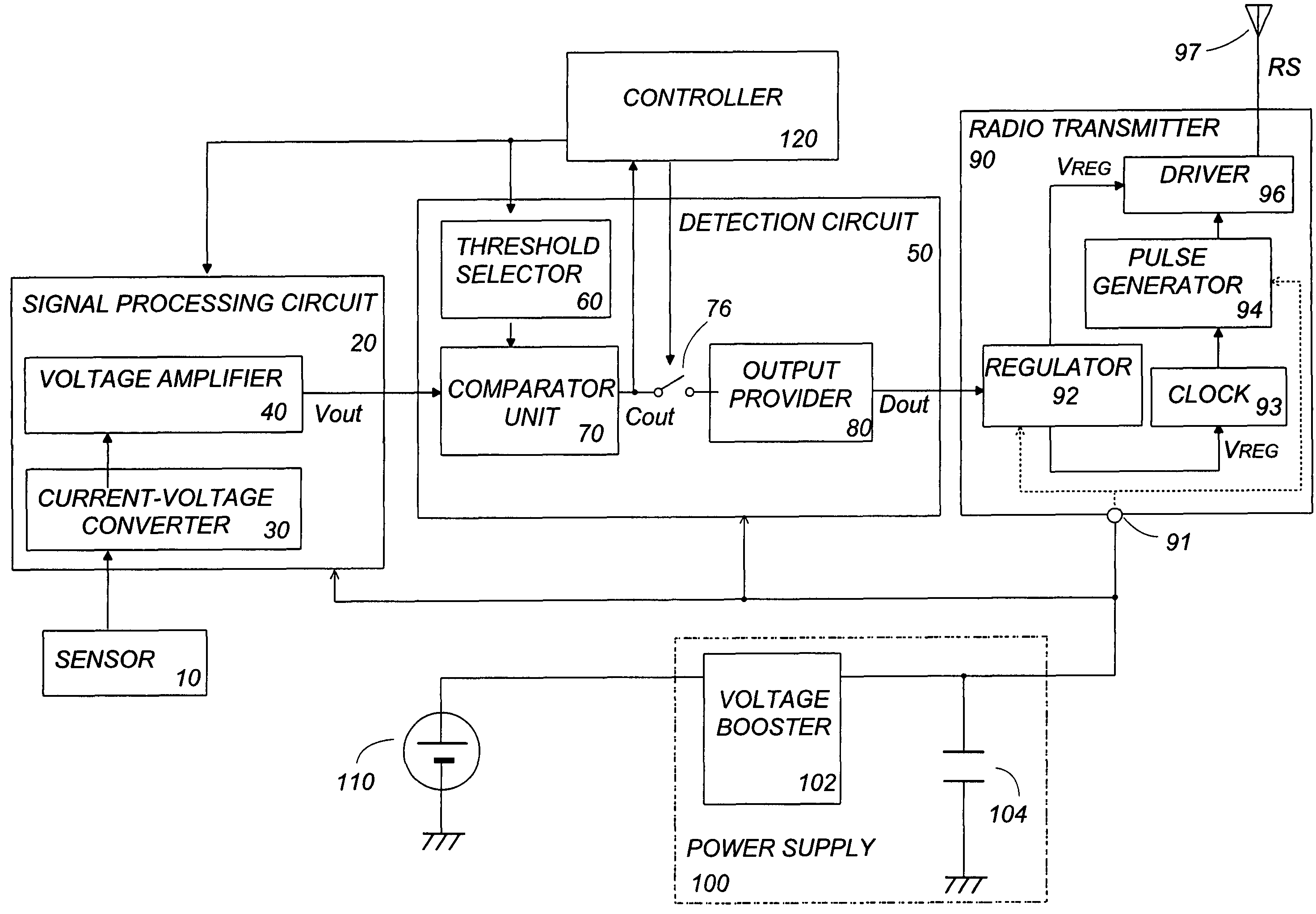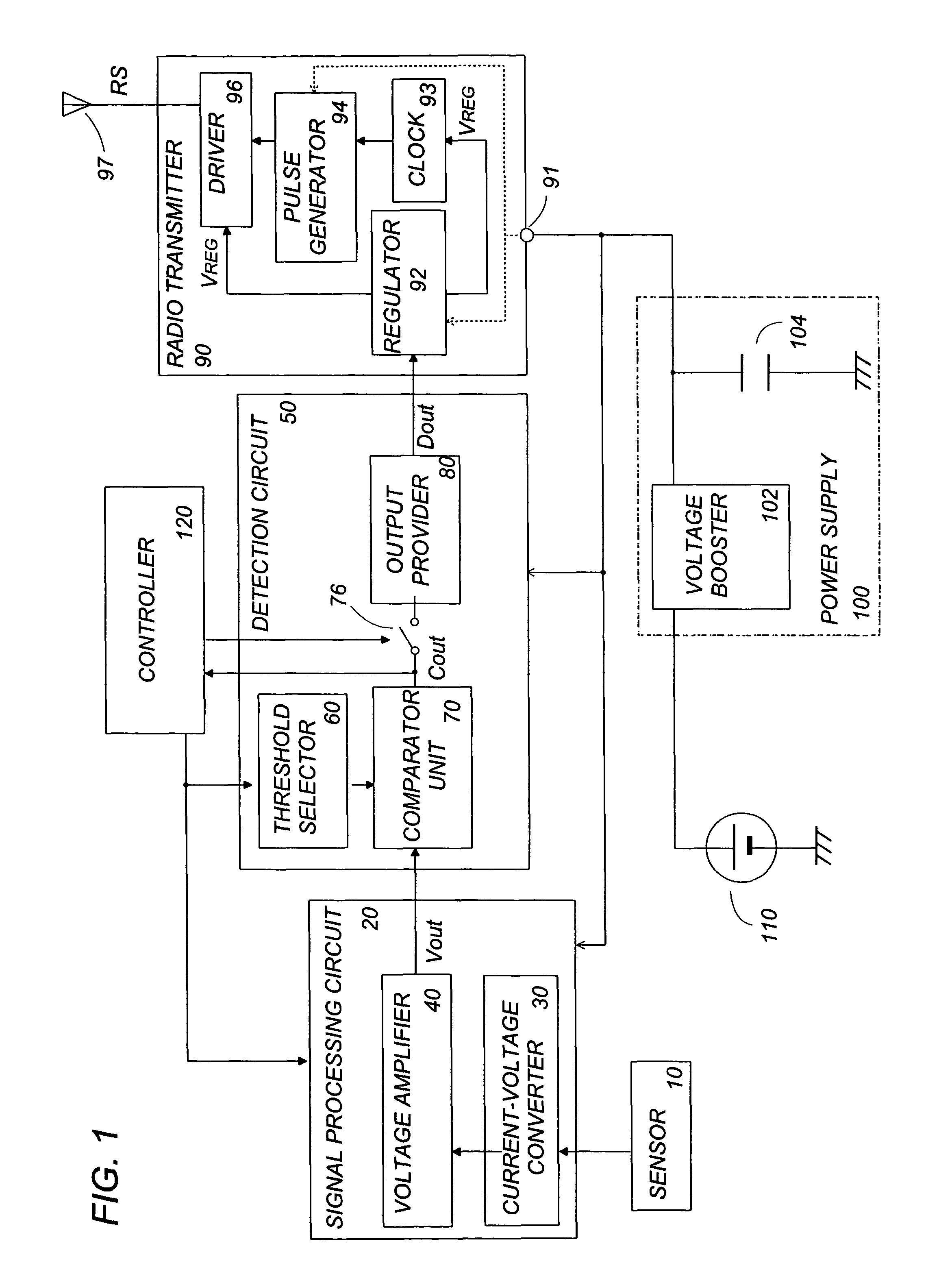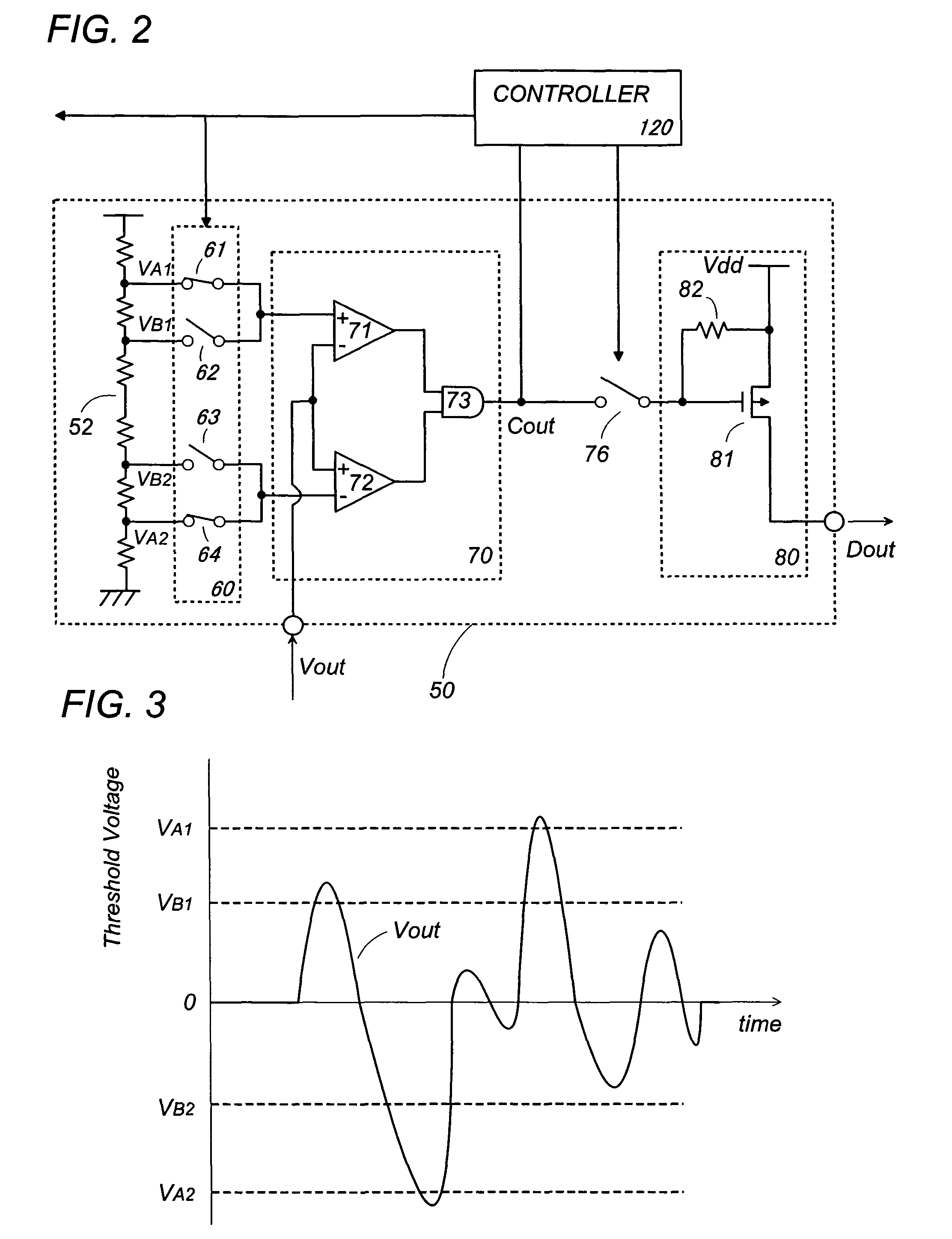Wireless sensor device
a sensor device and wireless technology, applied in the direction of process and machine control, wireless architecture, instruments, etc., to achieve the effect of prolonging the operating life of the power supply, saving energy, and less power consumption
- Summary
- Abstract
- Description
- Claims
- Application Information
AI Technical Summary
Benefits of technology
Problems solved by technology
Method used
Image
Examples
Embodiment Construction
[0018]Referring now to FIG. 1, there is shown a sensor device in accordance with an exemplary embodiment of the present invention. The device is specifically arranged to detect human motion, i.e. whether the human comes into or out of a surveillance area by use of an infrared ray sensor which generates an electric sensor signal responsive to infrared radiation from the human, although the present invention should not be limited to this particular instance. The infrared ray sensor 10 generates the sensor signal which varies in positive and negative directions in response to the motion of the human coming into and out of the surveillance area.
[0019]The device includes a signal processing circuit 20 which processes the sensor signal to provide an amplified analog signal, and a detection circuit 50 which compares the analog signal with predetermined criteria to provide a detection output according to the comparison result. The device further includes a radio transmitter 90 which, in res...
PUM
 Login to View More
Login to View More Abstract
Description
Claims
Application Information
 Login to View More
Login to View More - R&D
- Intellectual Property
- Life Sciences
- Materials
- Tech Scout
- Unparalleled Data Quality
- Higher Quality Content
- 60% Fewer Hallucinations
Browse by: Latest US Patents, China's latest patents, Technical Efficacy Thesaurus, Application Domain, Technology Topic, Popular Technical Reports.
© 2025 PatSnap. All rights reserved.Legal|Privacy policy|Modern Slavery Act Transparency Statement|Sitemap|About US| Contact US: help@patsnap.com



